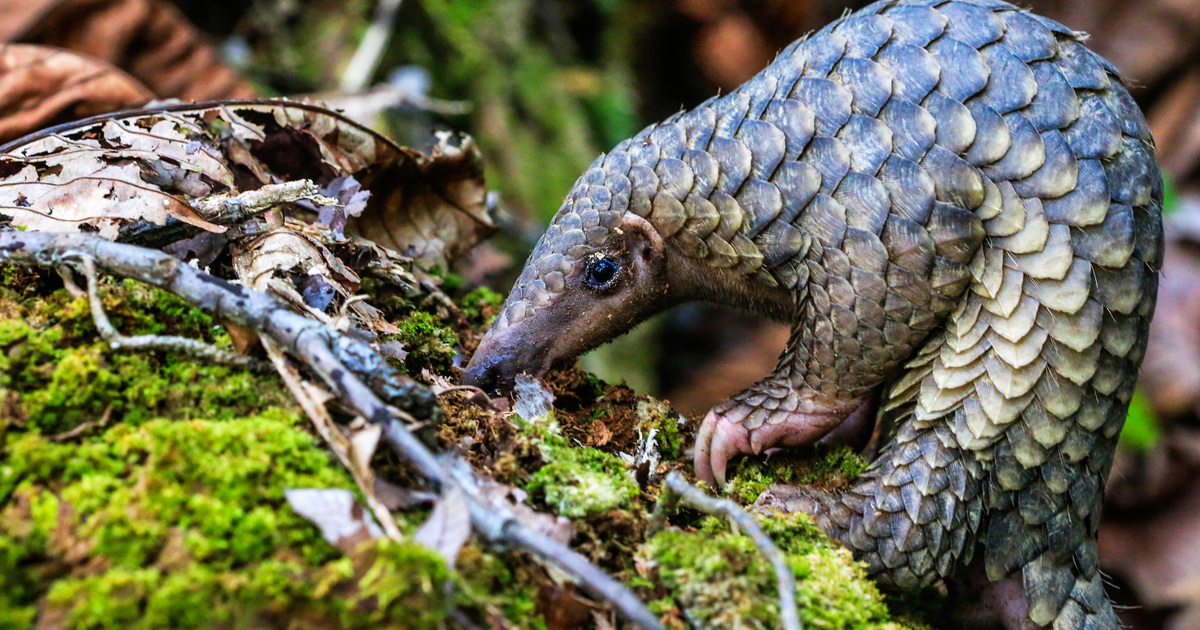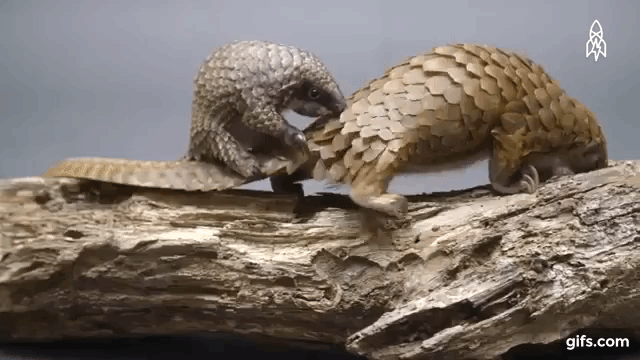- Joined
- Feb 27, 2023
- Messages
- 14,864
- Reaction score
- 37,028
- Location
- Idaho
- Gender
- Female
- Political Leaning
- Independent
Many of you here on DP know I'm an animal lover, and a cult follower of DirecTV's Animal planet network. Funny how you can reach 68 years of age, thinking you know all things animal, just to find out you don't.
Pangolins are one of the most trafficked animals in the world, but you may have never heard of them. If that’s the case, it’s time to learn everything there is to know about the pangolin—because these amazing animals are in urgent need of our help.
I have one question here....why do us supposedly intelligent human beings think it's a good idea to take a wild animal out of it's natural habitat? Humans suck.
Pangolins are a unique group of insect-eating animals, feeding mainly on termites and ants. They may look like reptiles, with their bodies covered in overlapping scales, but they’re actually mammals! Pangolins are about the size of a house cat, with small heads, long snouts, and thick tails. These prehistoric mammals, which have been around for 80 million years, are now threatened with extinction.
Did you know that pangolins are the only mammals in the world covered in scales? Made of keratin—the same material that makes fingernails and hair—the pangolin’s sand-coloured scales protect it from predators. When threatened, pangolins roll into a tight ball to shield their soft underparts.
Pangolins are native to Africa and Asia. They can be found in woodland and savannah habitats. Some live in trees while others live on the ground. The tree-climbing species make homes for themselves in hollow trees, while the ground-dwelling species dig deep burrows for nesting. Pangolins and armadillos are both mammals, like us, but they’re not considered close relatives to one another. Pangolins and armadillos do look similar, but pangolins are actually more closely related to dogs, cats, and bears than they are to armadillos.
A wonderful, fascinating mammal. Thank God there are good humans in this world trying to save this ancient breed.

 www.ifaw.org
www.ifaw.org
Pangolins are one of the most trafficked animals in the world, but you may have never heard of them. If that’s the case, it’s time to learn everything there is to know about the pangolin—because these amazing animals are in urgent need of our help.
I have one question here....why do us supposedly intelligent human beings think it's a good idea to take a wild animal out of it's natural habitat? Humans suck.
Pangolins are a unique group of insect-eating animals, feeding mainly on termites and ants. They may look like reptiles, with their bodies covered in overlapping scales, but they’re actually mammals! Pangolins are about the size of a house cat, with small heads, long snouts, and thick tails. These prehistoric mammals, which have been around for 80 million years, are now threatened with extinction.
Did you know that pangolins are the only mammals in the world covered in scales? Made of keratin—the same material that makes fingernails and hair—the pangolin’s sand-coloured scales protect it from predators. When threatened, pangolins roll into a tight ball to shield their soft underparts.
Pangolins are native to Africa and Asia. They can be found in woodland and savannah habitats. Some live in trees while others live on the ground. The tree-climbing species make homes for themselves in hollow trees, while the ground-dwelling species dig deep burrows for nesting. Pangolins and armadillos are both mammals, like us, but they’re not considered close relatives to one another. Pangolins and armadillos do look similar, but pangolins are actually more closely related to dogs, cats, and bears than they are to armadillos.
A wonderful, fascinating mammal. Thank God there are good humans in this world trying to save this ancient breed.

Pangolins Are The World’s Most Trafficked Mammal | IFAW
Pangolins are the world’s most trafficked mammals. Targeted for the exotic pet trade, medicines, and luxury meat, find out how IFAW is helping to save them

